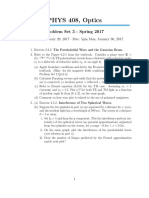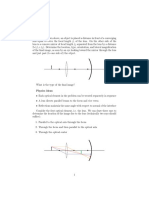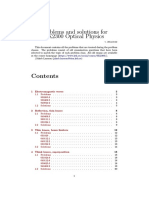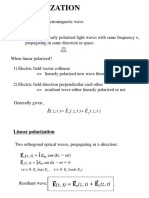0% found this document useful (0 votes)
16 views8 pagesProblem Sheet 3 Week 3 With Solutions
The document contains a problem sheet with six physics problems related to electromagnetism and wave propagation, including calculations of skin depth in gold, phase differences in uniaxial media, wave-vector surfaces in biaxial materials, and energy conservation in cylindrical waves. Each problem is followed by detailed solutions that involve mathematical derivations and physical principles. The problems cover topics such as permittivity, refractive indices, energy density, and Poynting vectors.
Uploaded by
kanviupadhyay0605Copyright
© © All Rights Reserved
We take content rights seriously. If you suspect this is your content, claim it here.
Available Formats
Download as PDF, TXT or read online on Scribd
0% found this document useful (0 votes)
16 views8 pagesProblem Sheet 3 Week 3 With Solutions
The document contains a problem sheet with six physics problems related to electromagnetism and wave propagation, including calculations of skin depth in gold, phase differences in uniaxial media, wave-vector surfaces in biaxial materials, and energy conservation in cylindrical waves. Each problem is followed by detailed solutions that involve mathematical derivations and physical principles. The problems cover topics such as permittivity, refractive indices, energy density, and Poynting vectors.
Uploaded by
kanviupadhyay0605Copyright
© © All Rights Reserved
We take content rights seriously. If you suspect this is your content, claim it here.
Available Formats
Download as PDF, TXT or read online on Scribd
/ 8




















































































